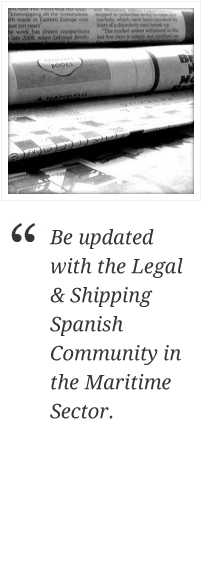CIRCULAR 1 A / 2020 IMO SULPHUR 2020 and its implementation at the Port of Barcelona
JANUARY 2020
A NEW IMO 2020 REGULATION COMES INTO ENTRANCE ON JANUARY 1ST 2020 REDUCING THE SULPHUR AMOUNT IN FUEL IN VESSELS UP TO 0.5%
On January 1st 2020 a new IMO regulation came into entrance, reducing the amount of sulphur contained in fuel up to a maximum of 0,5%, which will reduce in a 77% the emissions of maritime transportation across the world, with the aim of creating sustainable conditions for sea transport.
IMO believes that this measure will decrease the annual 8,5 tons of sulphur oxide in the atmosphere, which will also improve the air quality and, thus, the environmental conditions of people living close to the Port and navigations areas. This measure will also reduce the acid rain and ocean`s acidification.
 Before this regulation was applied, the Port of Barcelona had already taken other measures to reduce the impact of the Port`s pollution in the environment. The main actions taken were the promotion of renewable energies, like photovoltaic and wind energy in the Port zone; the promotion of new fuels with zero carbon emission for vessels, heavy vehicles and terminal machinery; the electrification of piers to allow an electric connection of vessels that will stop the emission of auxiliary engines of vessels while they are in the Port, the reduction of polluting gases and particles in suspense, the acquisition of solar panels into the Port and the obligation to turn off auxiliary engines of vessels while being in the Port.
IMO Regulation 2020 obliges companies that sell fuel and do bunkering to have fuel with a maximum of 0.5% of sulphur. It is the Harbour Captaincy who is in charge to enforce this regulation, through random inspections carried out in the Port each day (Paris MoU y MARPOL).
After speaking with Barcelona`s Harbour Captaincy, we have been advised that the methods used to verify if a vessel complies with the new fuel requirements are:
1)Â Â Â Â Â Â Â Â Testing the sulphur content of bunker in the vessel, by checking the procedures, delivery notes (BDN), Log Books, the MARPOL simple and additional samples from different parts of the fuel system.
Or
2)        Measuring the sulphur amount in the release tube, by using remote detection equipment’s like drones or similar monitoring equipment’s placed in strategic places.
The method used by the Port of Barcelona, according to the Harbour Master Captaincy, is the first one. The inspectors go on board vessels to take fuel samples which are taken later to the laboratory in order to know whether the amount of sulphur complies with the regulations. They also check the bunker purchase certificates and other documentation that can provide proof about fuel content.
Before this regulation came into entrance, the allowed amount of fuel was 1.5 for regular vessels and 3.5 for the other vessels. Now, it will be 0, 5 for regular and irregular lines (Rule 14 of Annex 6 of MARPOL Convention).
It remains unknown what the fines will be for the vessels which fuel does not comply with the regulations and whether these fines will be imposed through an Administrative procedure or in a different way.
It is expected that the amount of inspections and sample taking in order to verify sulphur content in fuel will increase during these following months in all Ports after January 1st 2020. The Harbour Master Captaincy is still waiting for further instructions regarding the enforcement and other possible changes in the application of this regulation, the inspections and consequences of non-compliance.
For further information about this, we are at your entire disposal.

